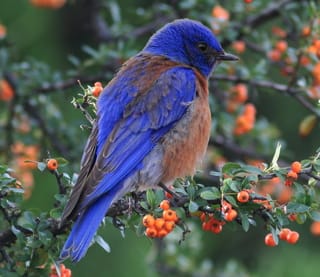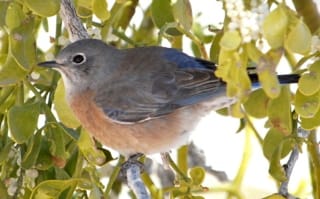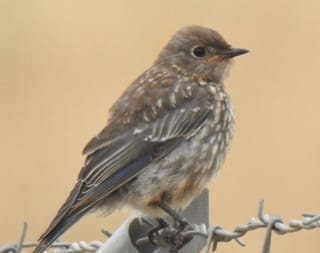Initially this guide displays common birds of all types that are flying right now in our area. Use the selectors below to view rare birds, view birds flying any time, restrict the output to a certain shape of bird, or search by name.
New Mexico is on the western edge of the Central Flyway which is one of the major migration pathways between north and south for birds traveling between breeding and wintering grounds along the Rocky Mountains. This has resulted in the state having an incredible diversity of birds with over 550 different species reported. A little more than half of this number are sighted annually on the Pajarito Plateau. Some of these birds are full-time residents, some migrate here for a few weeks or months, and other are only seen briefly as they pass through the region.
This guide features many of the birds known to frequent Los Alamos county by when they are likely to be seen in the area. You can get additional information on local birds by joining PEEC Birders or going to the eBird website. eBird also includes lists of rare bird sightings and birding hot spots.
Bird References
Birdweb
Cornell Lab of Ornithology
eBird
eNature
Institute for Bird Populations
National Audubon Society
New Mexico Ornithology Society
What Bird
xeno-canto
Subject Area Experts (all guides)
Steve Cary (butterflies)
Beth Cortright (insects)
Terry Foxx (invasive plants)
Leslie Hansen (mammals)
Richard Hansen (fish, mammals)
Dorothy Hoard (butterflies, trees)
Chick Keller (flowers, herbarium)
Shari Kelley (geology)
Kirt Kempter (geology)
Garth Tietjen (reptiles)
David Yeamans (birds)
Web Development and Content Management
Pat Bacha
Jennifer Macke
Graham Mark
Akkana Peck
Contact
Please contact us for local nature questions and sightings. We welcome comments, corrections, and additions to our guides.
For more information about local nature, please visit our Nature Blog or subscribe to PEEC This Week.
Make Selection
 Photo: male by Hari Viswanathan  Photo: female by Jerry Oldenettel  Photo: immature by Patty Teague |  Western BluebirdWEBL (Sialia mexicana)Family: Turdidae (Thrushes) Size: 6 - 7 in (15 - 18 cm) Flies: Jan 01 - Dec 31 Morphology: stocky birds with short tails; males are blue above with a rusty orange vest on the breast and upper back, blue throat, and white belly; females are gray with pale orange wash on the breast and bluish tint to the wings and tail, and white belly Status: native; common Food source: mostly insects (grasshoppers, caterpillars, beetles, and ants) with some berries and fruits (mistletoe, juniper, and elderberry) Habitat: open woodlands, pastures with old trees Western Bluebirds are most visible in the local area during winter and spring. They can most often when they fly down from a perch to pluck up insects from the ground. They will also catch insects in mid-air and will actively look for them among foliage. During winter, small flocks of Western Bluebirds may be seen feeding on berries in trees. Males typically stake out a nesting territory before courting a female. The nest site is in a cavity such as a tree hollow, old woodpecker nest, birdhouse, or hole in a building. Western Bluebirds have suffered by competition with European Starlings and House Sparrows for nesting sites. Info Photos Distribution Frequency Featured |
